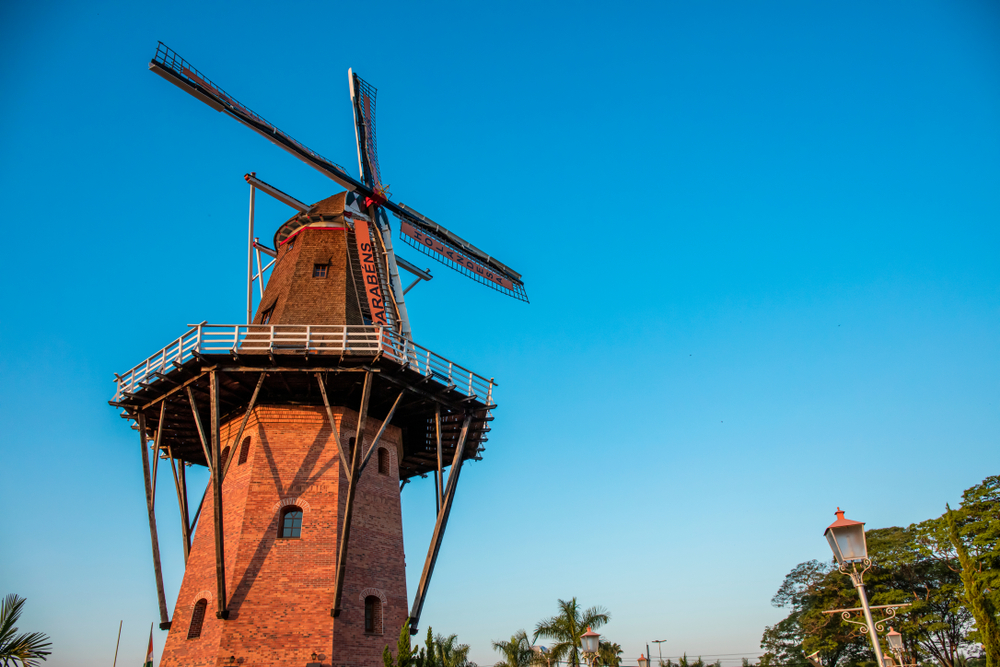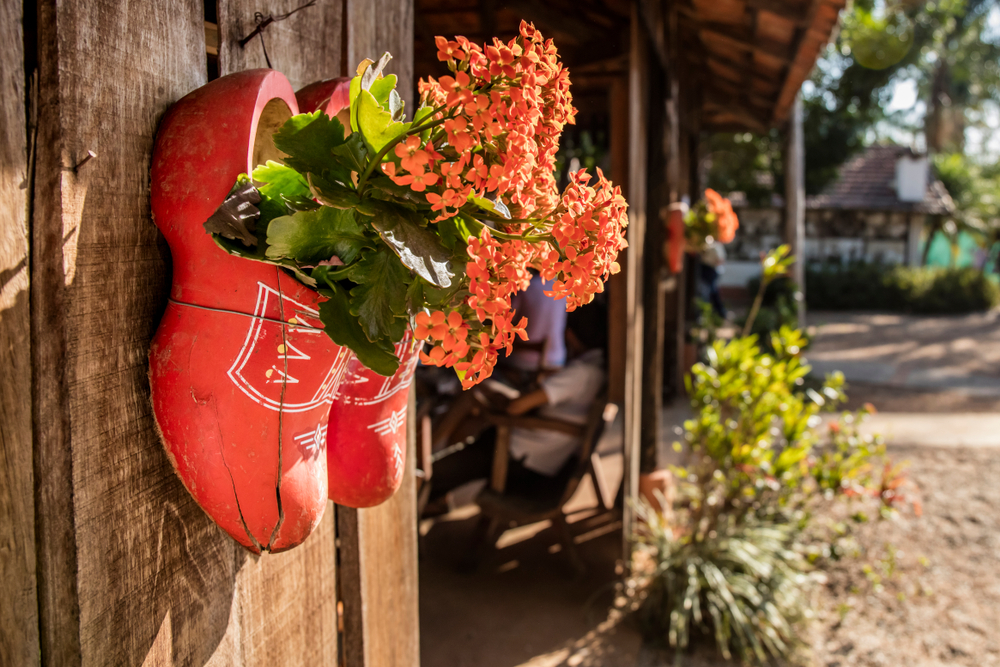On the flat highway heading north-west out of the megacity of São Paulo, It doesn’t take long before the skyscrapers recede, giving way to vast pastures and nothingness. Once the bright countryside sun comes out from behind the clouds, you’re undoubtedly somewhere else. With the oppressive heat scorching the grass on the surrounding low hills, one could say it’s not a suitable place for delicate things. Some pops of color off on a discrete exit ramp remind you you’re not in Texas. Cars queuing up for their first snaps of a town gate decorated with well-maintained flowers announce you’ve arrived in Holambra, the “Dutchest” place in Brazil.
While Holambra sits a mere two hours drive from São Paulo, the journey undertaken by the first 680 Dutch immigrants in 1948 was not so straightforward. They followed an unpaved path from the nearby city of Campinas to Fazenda Ribeirão cattle farm, a 5,000-acre piece of land bought by the Dutch Organization of Catholic Farmers and Vegetable Growers (KNBTB) from American meatpacker Armour & Company.
This place, which would eventually become Holambra—a neologism combining Holland, America and Brazil—was bare and isolated.
Fleeing to Brazil to rebuild their lives after World War II, the Dutch community faced some hardships right from the off. Their first 700 dairy-producing cattle perished from tropical diseases and financial crisis struck, causing many of the families to move to Brazil’s South.
While they managed to reorganize their economic activities by setting up a cooperative agricultural system, the real game-changer came in the late 1950s, when the first gladioli seeds arrived.

Nothing towers over the windmill
Modern-day Holambra proudly stands by its title as the Flower Capital of Brazil. It pays attention to the little details: road signs are tulip-shaped, streets are named after flowers or Dutch cities. Under the shadow of the high eucalyptus trees in Van Gogh Park, or by the shore of the Dutch Lake, the town doesn’t really feel like Brazil—that is, if it wasn’t for the scorching heat.
Though it is tiny, Holambra is far from an exclusively Dutch town. Therefore, as it grows and modernizes, maintaining this symbolism is vital. “Holambra is and will remain preserved. We have many ways to maintain the city’s history. We teach it in schools, we have cultural associations, dance groups. It is our job to protect it as public administrators and as a society,...


 Search
Search






































